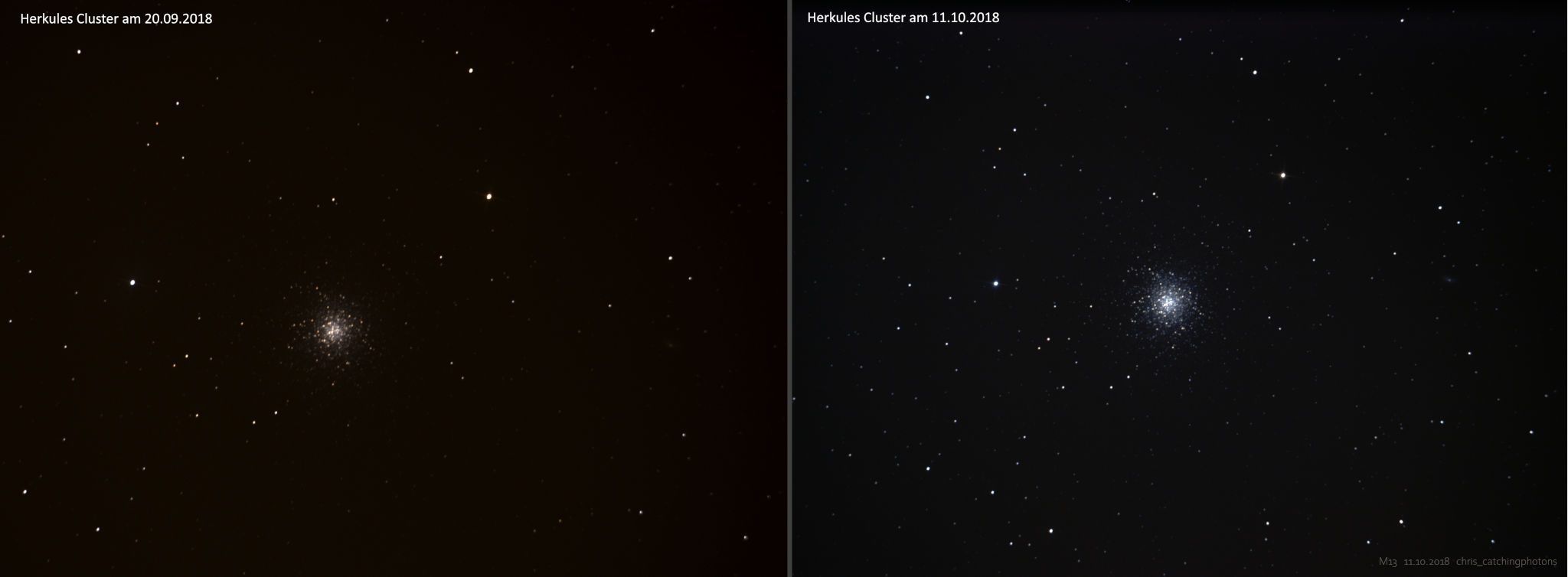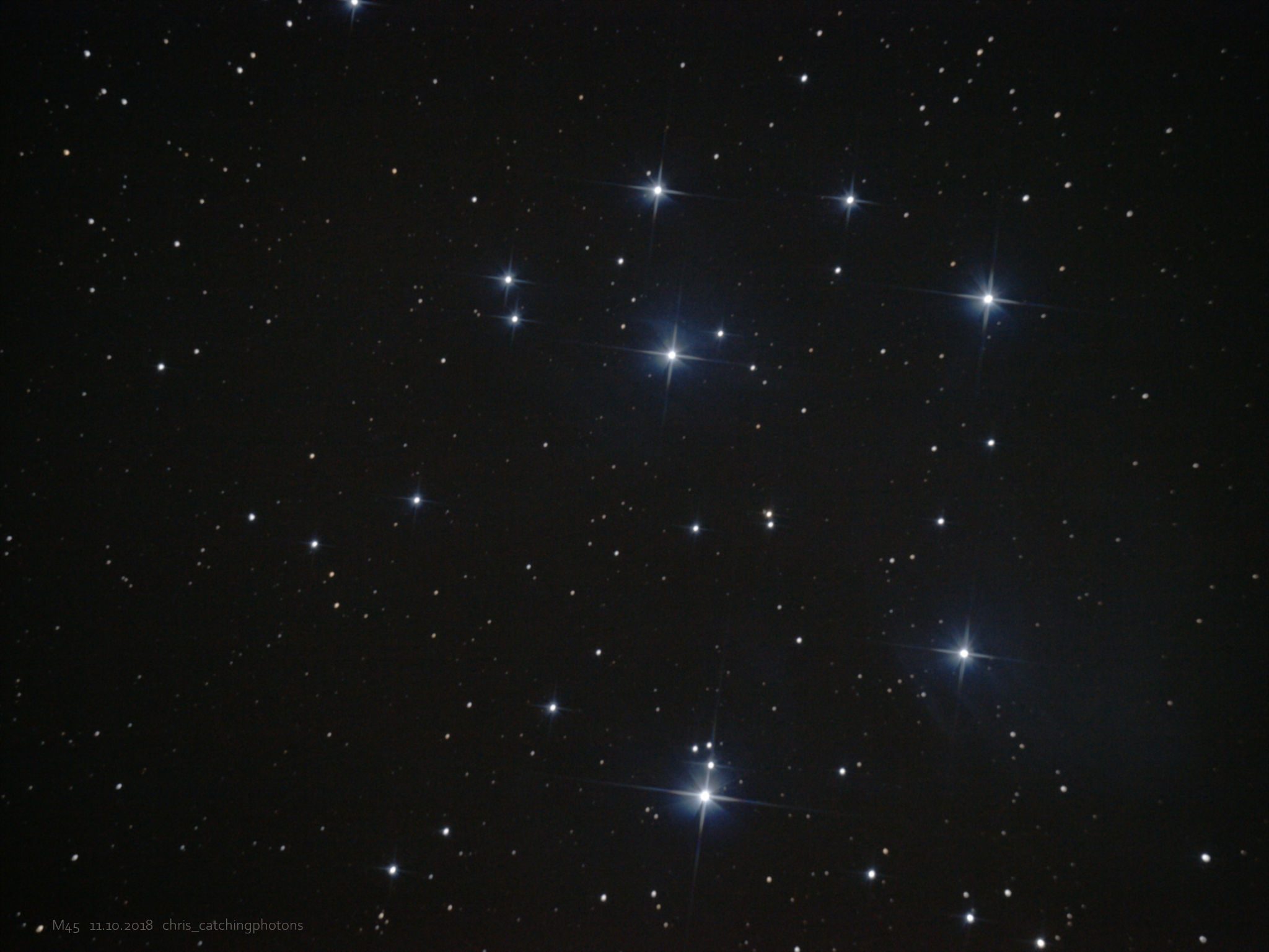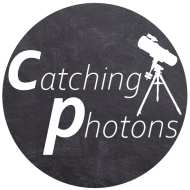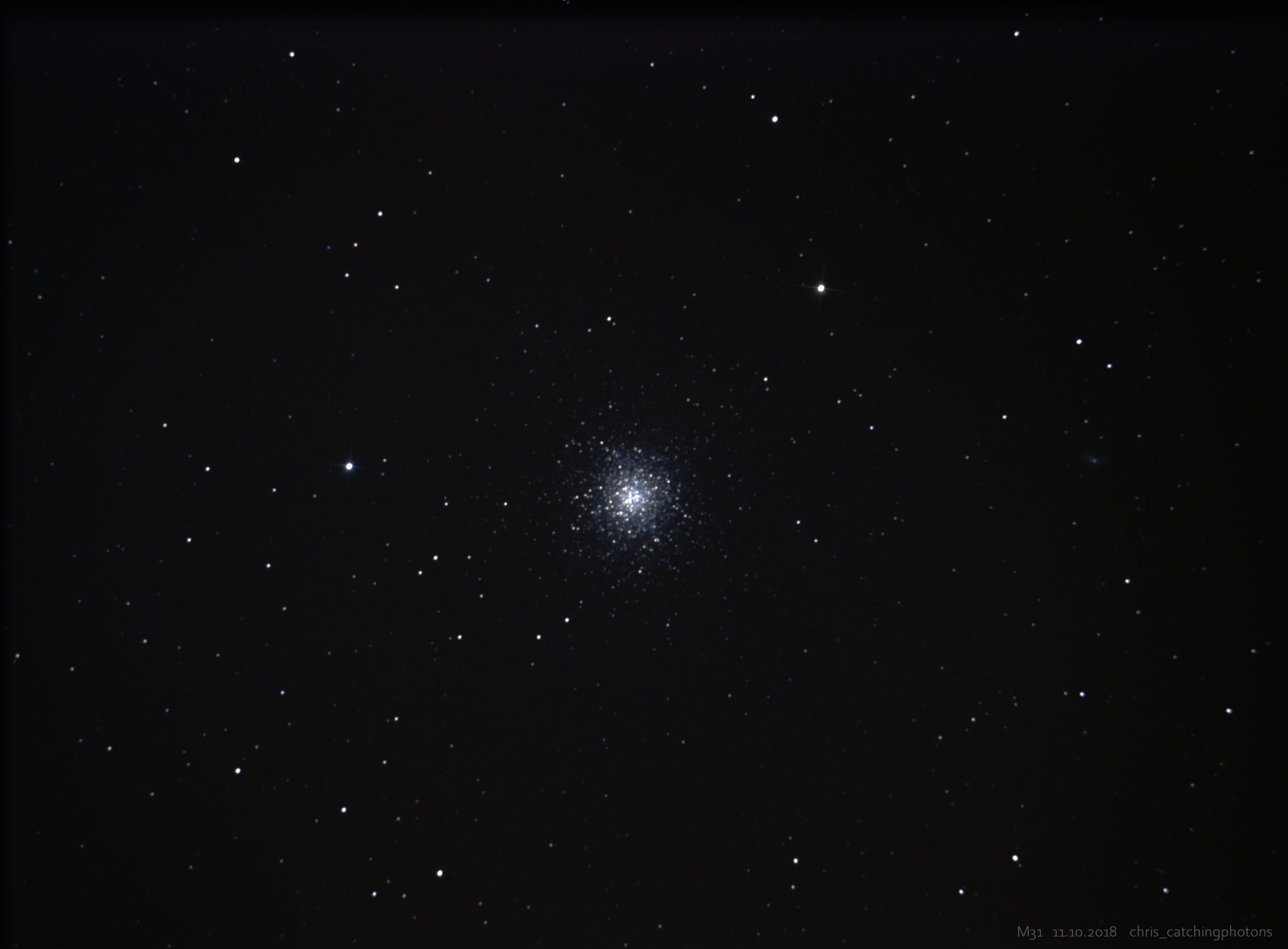11.10.2018
New aspect: Coming back to already visited objects to enhance the quality
Acquisition:
M31 – Andromeda Galaxy: First I tried a second round on M31. As you might remember, M31 was one of the first DSO my brother and I visited. Back then we took little time to capture this beauty.
I had recently switched the camera to an Olympus E510 and this session I wanted to give this camera a try. The idea was not to touch exposure length (60’) and ISO (400) but to increase the amount of overall exposure time. I got 75min of exposure time and thought that would be OK. As you see, it took me a while to grasp on the fact that exposure time can’t be to long. Thumb rule for me now is: one hour for basic structure of the object – two hours for increased details and >2h for smother background and finder structures…. What ever. Back then I violated the “no more than one object a night”-rule every night.
M13 – Hercules cluster: The second object I wanted to redo was M13. The last time I visited M13 was the field trip with my friend where we have had clouds cutting our session. This evening it was a totally clear night and I spend an hour (61 x 60’) on M13. Framing and stuff was equally the same.
M45 – Pleiades: Late on that evening the Pleiades rose from the horizon. I had spotted that cluster several times before but never tried to capture it. Because is was late, I only took 10 x 60’ light frames on M45.
Processing:
M31: Andromeda was a huge disappointment. I had focused with a self made Bahtinov mask and checked the focus before starting the imaging session. What ever happened then… something changed the focus and all the tiny little stars had become little blurry blobs of light. This ‘out-of-focus’ did effectively kill all details on that image. I tried processing it, but gave up. The cloud structures of the inner parts of M31 are barely visible but without any contrast. Stars around M31 are blobby and the overall impression is “blurry”. So: CHECK YOUR FOCUS!

M13: With M13 I tried several attempts for finding the right balance between enhancing the outer stars without burning out the core. That’s not too easy for a newcomer like me. This comparison shows the difference between the short and the long(er) integrated exposure time. It also shows the increasing ability in processing. The first (field) image seems reddish and dark. The second one is more colour true, though a bit blue but much brighter in total. In total I did four versions of M13:
Tech details for M13:
- 75 x 60′ light frames
- 15 x 60′ dark frames
- 15 x bias frames
- ISO 400

V0: Maybe the most natural looking version. The object remains a bit dark.
V1: Much more stretching of the data. The stars are much brighter and the outer stars do appear. The core was dimmed by a layer mask in GIMP to apply the final stretch only to the outer areas. Notice that dim objects like the galaxy on the right loose structure.
V2: Curve stretching like in V1 but not that aggressive black level. Fainter objects (galaxy on the right) do remain details. The inner core has nearly no dimming layer mask. That gives the object (in my opinion) a more natural touch.
V3: A very aggressive dimming layer in the core region. The Mercedes triangle is clearly visible but the overall structure of the object disappears. Therefore the inner stars can be distinguished very well.
Feel free to give me a feedback on those images. What is your favourite version?
M45: The Pleiades had just too little exposure time. The spikes of the brighter stars are pretty and in a second attempt I made some of the inter stellar nebulae visible. It was a balance act between highlighting the gas and lowering the background noise. The difference between the two was just very small. But in the end I got my first not too bad picture of M45.

Conclusion:
The main take away messages of this evening were:
A) Don’t photograph three objects on one evening! Just concentrate on one object a night. Beside the focus issue on M31 I again (!) spent to little time on that target. Even with perfect focus the details would have been invisible for sure.
B) Check your focus! Every time! Check it! The disappointment I felt when reviewing my data on the PC and realising the hole session was lost due to a little (!) shift/ movement of the focus knob was too bad! Everything can be ruined.
C) Revisiting targets can be a great thing. You can compare settings and their impact on your image. Test your (enhanced) skills, focus on other details of that particular target… many things to consider.
All in all it was a very information and procedure rich night. I took much more with me then three cool images.
Greetings,
Chris




